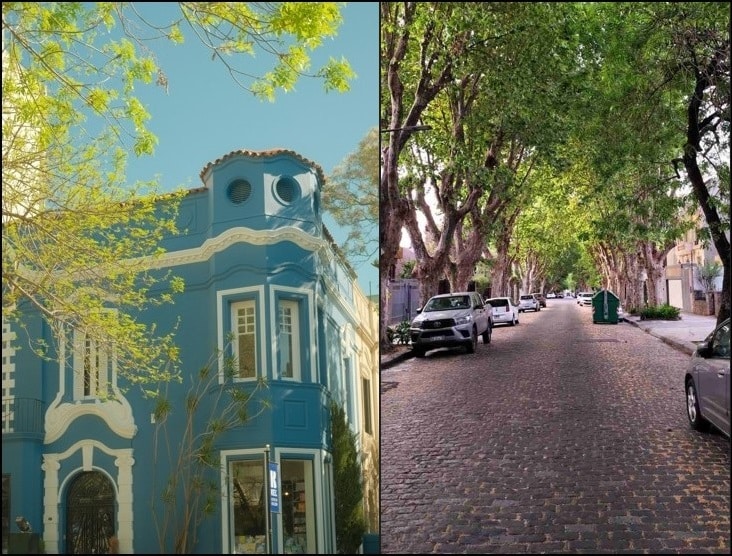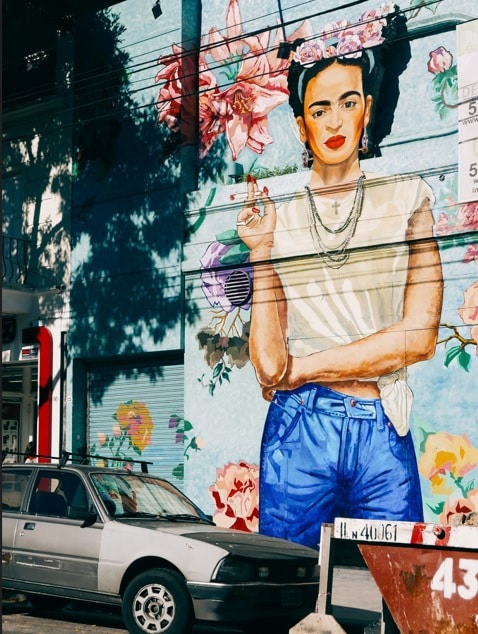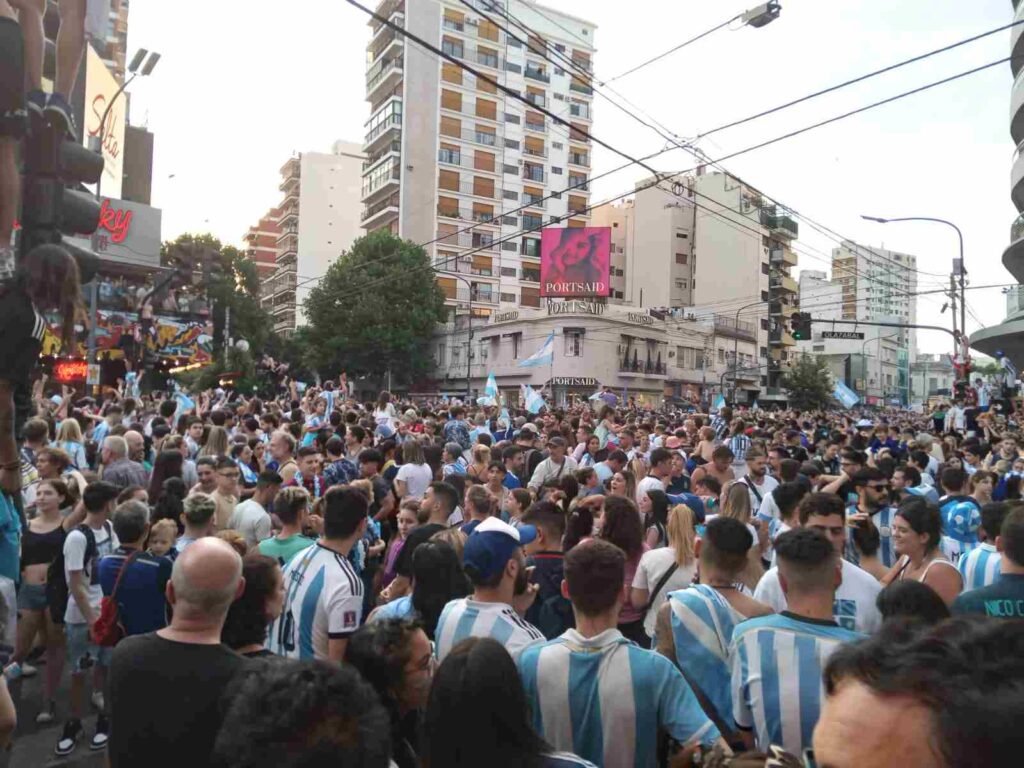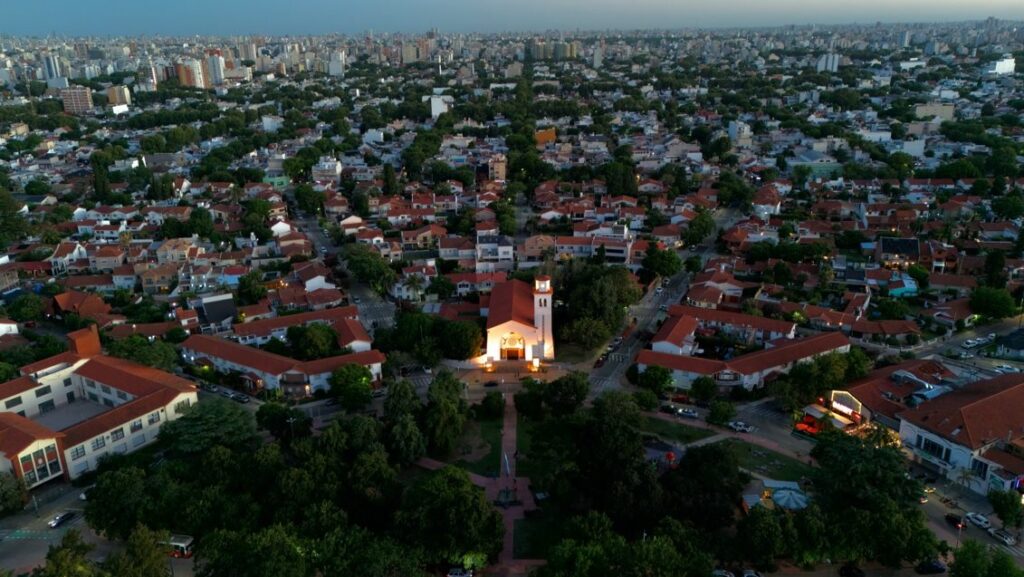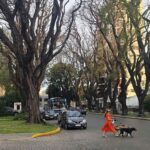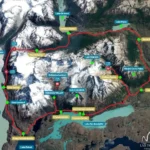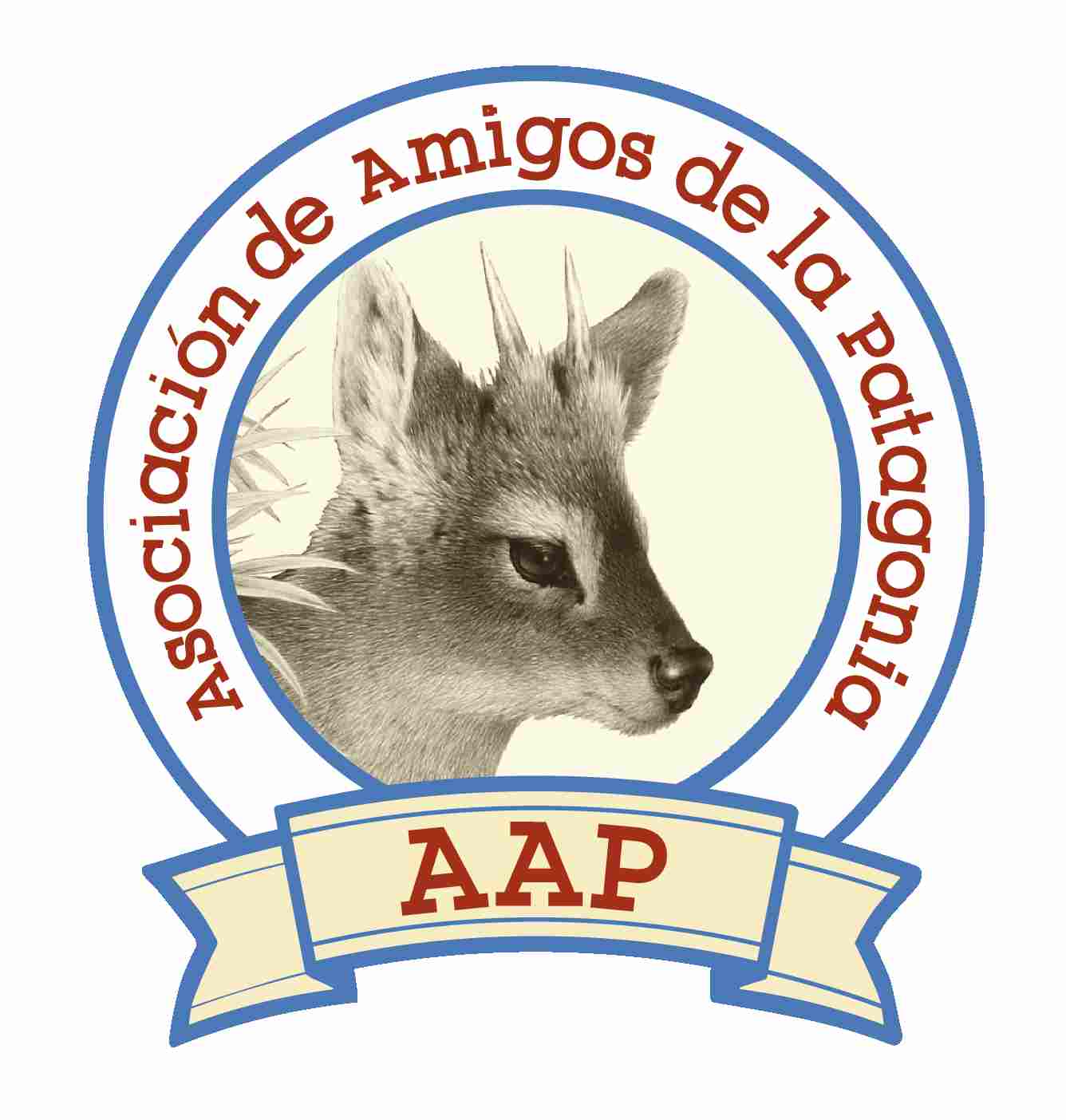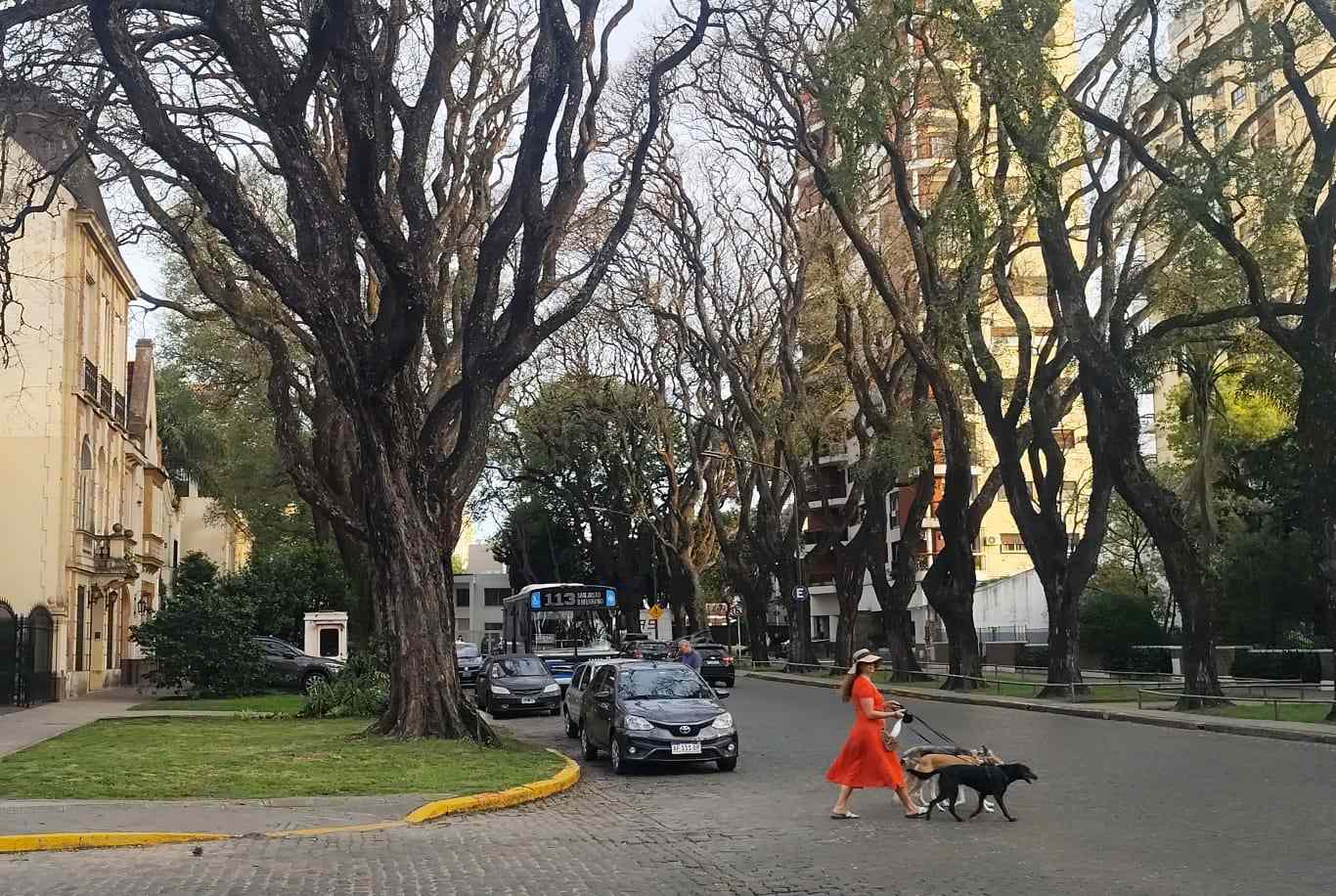
Hi! This is Santiago, one of the founders of Beyond BA Latam. I live in Buenos Aires – in the neighborhood of Villa Urquiza – and I work in Palermo (Palermo Soho). The distance is about 6 km, which I try to cover walking or biking, or by combining other types of transportation with walking.
The thing is: I love walking. Not only in the neighborhoods between both places, but really anywhere.
I’ve walked around Buenos Aires as a means of transportation, for recreation, alone, with friends, with my partner, with my family, with small kids, in winter, summer, autumn, spring, during the day and at night, in cold and warm weather, rain or shine.
I’d like to share with you some of my favourite neighborhoods to walk — including non-touristy and touristy areas.
Belgrano & Belgrano R (mostly non-touristy)
Belgrano is a large neighborhood in the northern part of the city of Buenos Aires. It’s divided into two main areas: “Belgrano” and “Belgrano R.”
Belgrano R stands for “Residential Belgrano.” It’s full of Victorian-English–style houses, wide sidewalks with beautiful urban forestation, and cobblestone streets. This is an incredible neighborhood to walk around, particularly in autumn or spring. It’s a calm, non-touristy area that you can enjoy in different ways.
One of the “musts” of this neighborhood is Melian Avenue: a wide avenue lined with Victorian houses and a natural tunnel of Tipuana Tipus (a.k.a. “tipas”). These trees were brought from the Yungas over a century ago and planted in different areas of the city — an incredible view. In December, the trees are covered in yellow flowers that later fall on the streets, blanketing the sidewalks with a golden carpet — a beautiful sight to see.
Likewise, this and other neighborhoods in the city surprise visitors with Jacaranda, Ash, Liquidambar, Paradise, Japanese Maple, Silk Floss (Palo borracho), Ceibo, Plane (this causes some allergic reactions in Spring), and Pink Lapacho trees (among other types), which paint the city in different colors almost every season of the year.
Another great spot is Castelli Square, with cafés and restaurants right next to it, in front of the Belgrano R train station (this train connects with other areas of the city).
Belgrano (the other one – “without the R”) is more chaotic, but still authentic, as it’s outside the main tourist corridor. You can explore Barrancas de Belgrano (near the Barrancas train station), Chinatown (touristy but still worth a visit), the square with the dome, and nearby museums such as the Larreta Museum.
Palermo Hollywood & Palermo Soho (touristy and non-toury)
Even though there is technically only one neighborhood called Palermo, the truth is that locals have informally divided it into many sub-quarters. My favourites are Palermo Hollywood and Palermo Soho.
Both are bohemian and particularly pleasant at sunset on weekdays, when people leave work for an after-office drink — bars, cafés, and restaurants fill with locals and foreigners walking around without the chaos of downtown. It’s a mix of old houses and low-rise buildings that make it aesthetically unique.
In Palermo Soho, I especially love the area of the pasajes (small streets) around Plaza Serrano, including the incredible library-café-shop on Thames Street (Thames 1762). In Palermo Hollywood, I particularly like the area bordering Colegiales, near Dorrego Street and Plaza Mafalda.
Villa Urquiza & Parque Chas (non-touristy area)
I have a strong emotional connection with Villa Urquiza. My grandma “Titi” has lived here since I was born, and a big part of my story lies in this neighborhood. I actually grew up in another area, in the suburbs of Buenos Aires, but when I was 30, I came back and now live on the same corner as my grandma.
Here you’ll mostly see locals, and witness as well the transition from the old residential neighborhoods to more modern ones. Villa Urquiza connects easily with Belgrano R and other parts of the city. You’ll find different “versions” of Buenos Aires here.
For example, the area south of the railway tracks is undergoing modernization, with new buildings coexisting with old stylish houses — this has its pros and cons, depending on how you see urban growth. I particularly like Mendoza Boulevard and the area known as “Urquiza Do-Ho” (Donado-Holmberg).
The northern side of the railway retains the spirit of the old neighborhood — quiet, residential, and full of charm.
Parque Chas is a small neighborhood that breaks the traditional grid pattern (damero) of Buenos Aires. Its streets form a spider-web shape and are named after European capitals, while the diagonals have other names. It’s right next to Villa Urquiza.
Saavedra & Coghlan (non-touristy area)
Coghlan borders Villa Urquiza and Belgrano R. My favourite area is around the Coghlan train station: an old English-style area with a small café, stylish gardens, children’s squares, trees, and graffiti — a wonderful place to walk around.
Saavedra is closely connected to several parks (such as Mujica Park, Saavedra Park, Sarmiento Park, and General Paz Park) and has beautiful residential streets. It’s a lovely area to walk and relax on a sunny day.
There’s also a sub-quarter called “Barrio Saavedra,” located between Crisólogo Larralde Street and Mujica Park, very different from the rest. It also breaks the city’s grid layout and was originally a popular neighborhood built during Evita Perón’s time for workers. Today it has become a stylish place to live, with beautiful houses.
Colegiales, Chacarita & Villa Crespo (touristy and non-touristy)
These neighborhoods are in between Palermo and the neighborhoods mentioned above (except a part of Belgrano, which borders Palermo). It’s a mix of bohemian spots, old warehouses, flea markets (Mercado de Pulgas), and renovated PH houses (a traditional Buenos Aires type of home).
Many young Argentinians gather here for music, art, cafés, and good vibes. It’s one of the most dynamic areas in the city right now.
Other Great Places to Walk
When I think about the best places to walk in Buenos Aires, the list could extend to many other areas, such as:
- Devoto neighborhood: particularly around Arenales Square, one of the new gastronomic hubs. It’s also known as “the village inside Buenos Aires.”
- The embassy district around Palermo Chico.
- The area around the Rosedal (Rose Garden) in Palermo, same as Palermo Parks (Bosques de Palermo) and the Botanic Garden.
- Recoleta.
- San Telmo.
- Costanera Sur Ecological Reserve.
- Avenida de Mayo (the avenue that connects Plaza de Mayo with the Congress).
- Puerto Madero.
- The area of the Memorial Park in Costanera Norte.
Naturally, if you like exploring cities on foot, you’ll be keen to visit even more areas such as Núñez, Caballito, and beyond. Buenos Aires is beautiful all year long, but I’d avoid the weeks of very high temperatures (peak summer time).
Custom Tours in Argentina
We’re a local travel agency based in Argentina, offering tailor-made tours in Argentina and Chile for discerning travelers just like you. We’d love to help you design your next experience — so don’t hesitate to contact us for your next adventure!
Related posts & tours:
0



